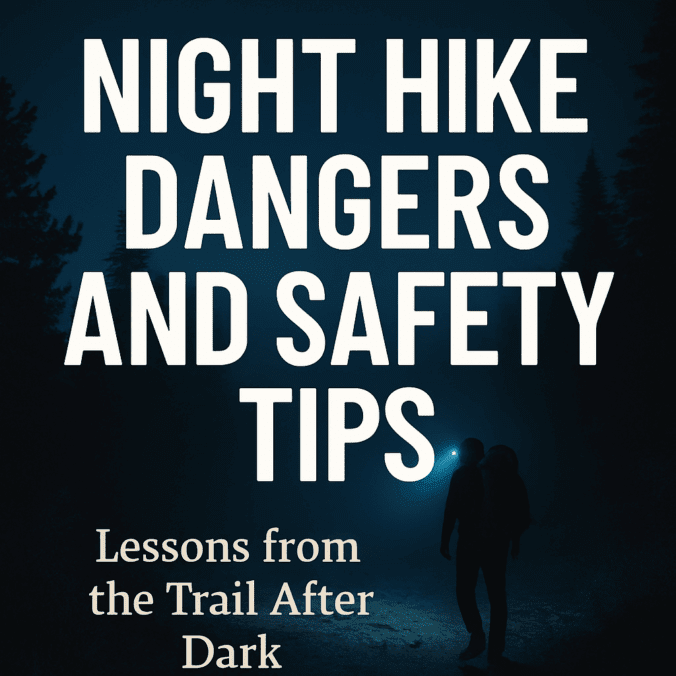Lessons from the Trail After Dark
There’s a hush to the world after the sun slips below the ridge. The trees don’t whisper so much as breathe. Your boots crunch a little louder. Your headlamp casts a halo that sways with your step. And for a moment, or maybe many, you feel both very small and very alive.
Night hikes are a strange kind of magic. The kind where the ordinary becomes unfamiliar, and the trail you walked this morning suddenly carries a different personality under the stars. But that kind of magic doesn’t come free. It asks for awareness, a little humility, and a good dose of preparation.
This post is for anyone who has stood at the trailhead at dusk and thought, “What if we didn’t turn back just yet?”
1. What Makes Night Hiking Different?
By day, trails feel like old friends. By night, they become something else entirely. Pine needles crunch louder than expected, and the air carries a sudden chill that wasn’t there an hour ago. The beam of your headlamp carves out a narrow world, revealing only what lies directly ahead, while the rest fades into mystery.
But darkness also narrows your perception. Landmarks fade. Distance plays tricks. That same rock you passed an hour ago could look like a completely different one on the way back.
Night hikes heighten everything. That can be beautiful, but it also calls for respect.
2. Common Night Hiking Dangers
Losing the Trail:
Even familiar trails can become disorienting in low light. A missed junction or subtle switchback can lead you off course fast.
Wildlife Encounters:
Nocturnal animals are more active at night. Most want nothing to do with you, but surprise encounters with snakes, coyotes, or even a startled deer can turn tense.
Injuries:
Rocks, roots, and uneven footing are harder to see. A twisted ankle feels twice as serious when you’re two miles from the car with the sun long gone.
Weather Shifts:
Even in summer, temperatures can dip quickly after dark. Hypothermia is not just a winter risk.
3. How to Stay Safe While Hiking at Night
Bring a Reliable Headlamp (and a Backup):
Your phone light is not enough. A good headlamp keeps your hands free and your trail visible. Bring extra batteries or a second light just in case.
Know the Trail Ahead of Time:
Night hikes should not be your first visit to a trail. Stick to well-marked routes that you’ve already explored in daylight.
Tell Someone Your Plan:
Always share where you’re going and when you expect to be back. Even a short hike can become serious if something goes wrong and no one knows where you are.
Dress in Layers:
Temperatures drop fast. A light jacket or thermal layer could be the difference between a peaceful return and a miserable trek.
Stay Aware of Wildlife:
Make noise at intervals so animals know you’re coming. Avoid using scented snacks or anything that might attract unwanted company.
Keep Your Group Together:
It’s easy to get separated when visibility is low. Pause often. Do regular headcounts. A short delay is better than a lost hiking buddy.
4. Extra Gear Worth Packing
- Reflective tape on your backpack or clothing
- Emergency whistle or small air horn
- Trail map or GPS app with offline mode
- Compact first-aid kit
- Glow sticks for easy group spotting or gear marking
5. Final Thoughts from the Trail
Night hiking isn’t just about walking through the dark. It’s about slowing down. Paying attention. Letting your senses recalibrate. When done right, it can feel like stepping into another world — quieter, stranger, and more alive.
Just remember, that kind of wonder asks for preparation. Pack smart. Respect the trail. And trust your gut.
Because sometimes, the best adventures begin after sunset. And if you’re lucky, the moon just might light the way home.



Leave a Reply